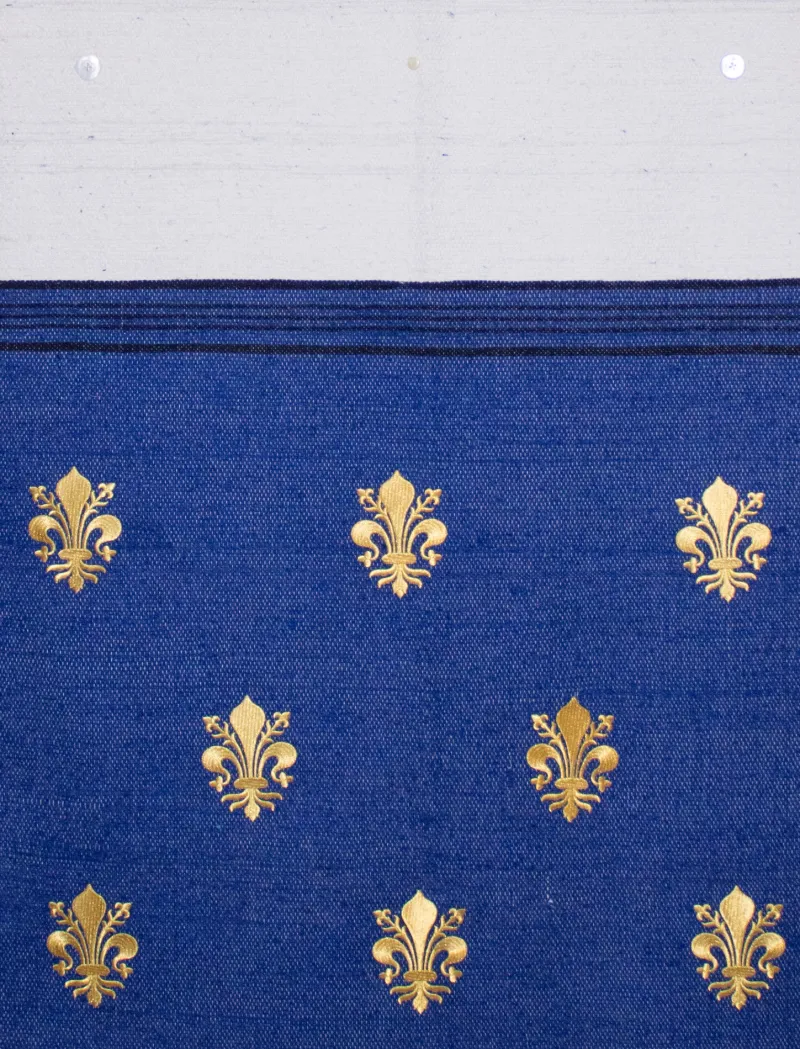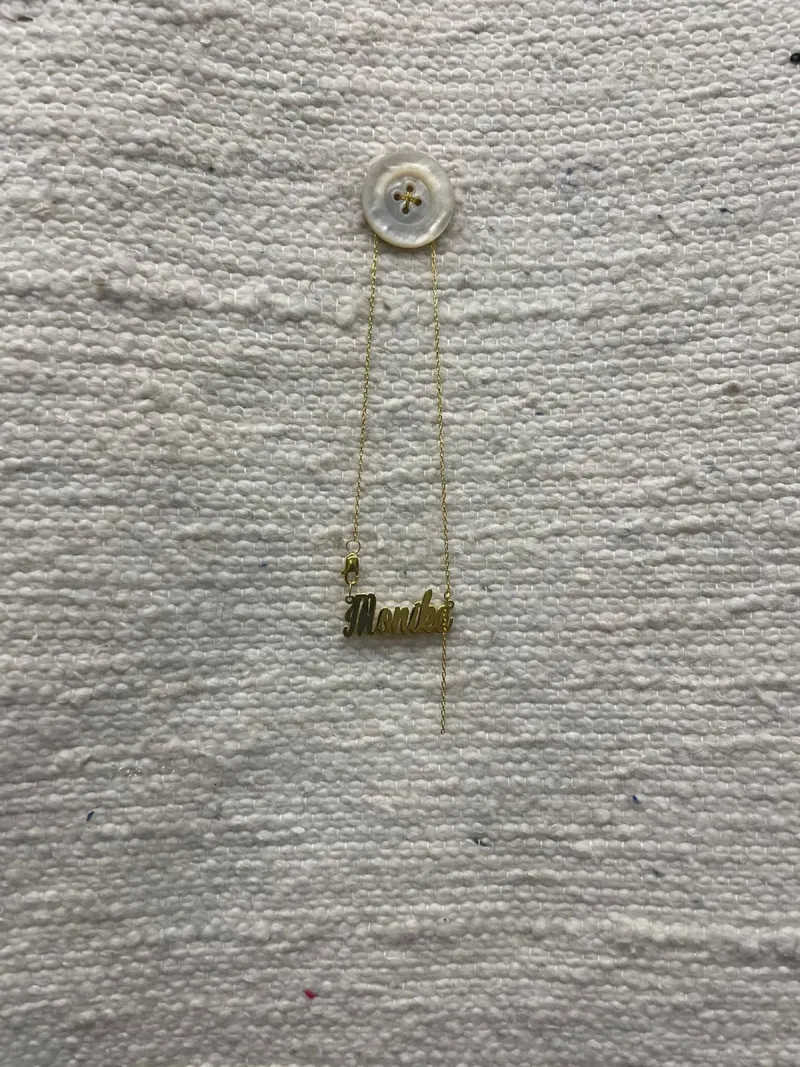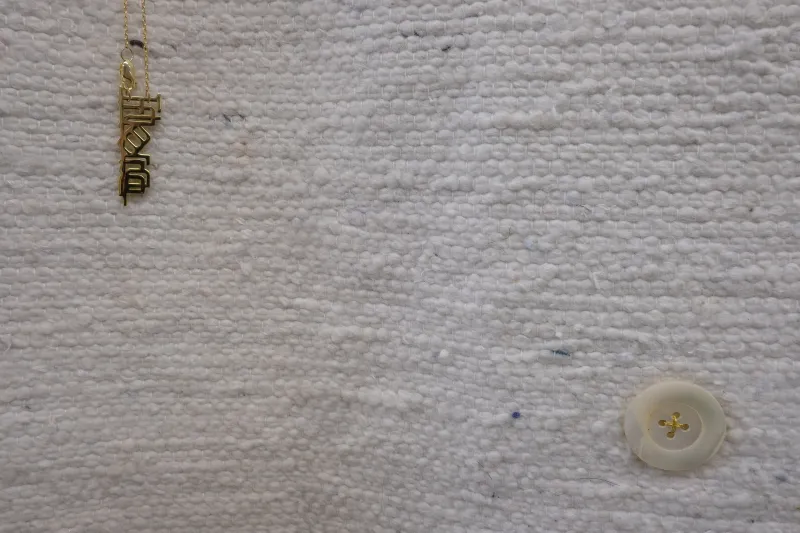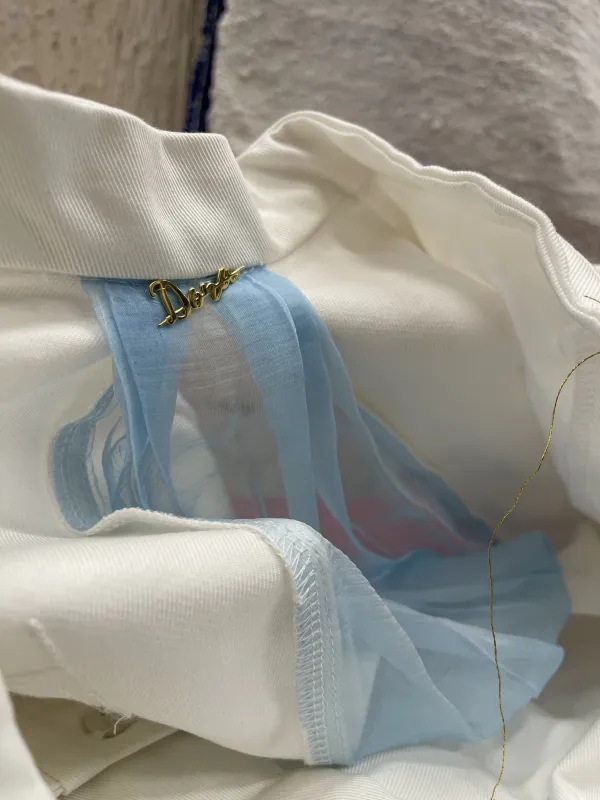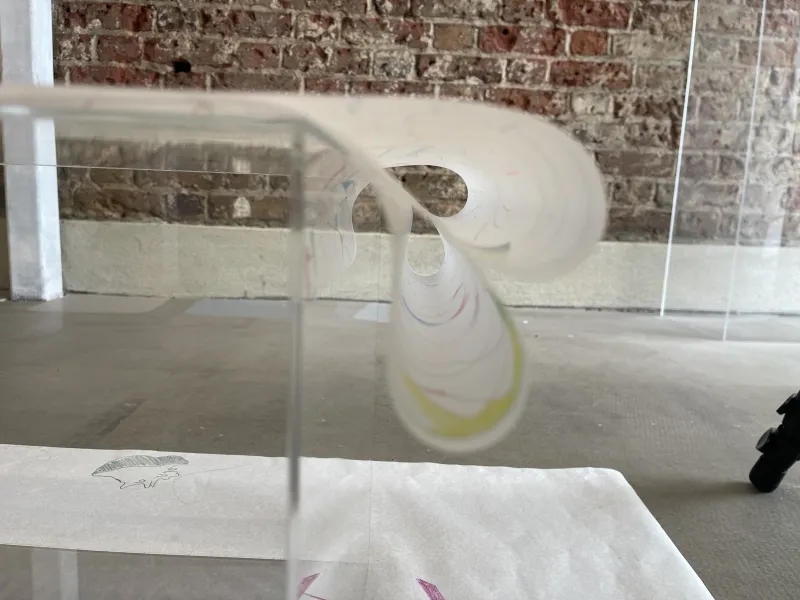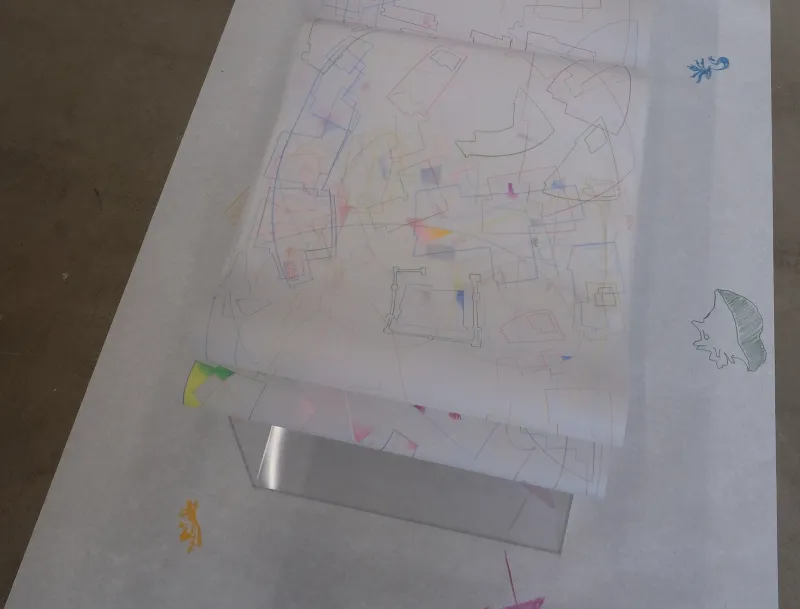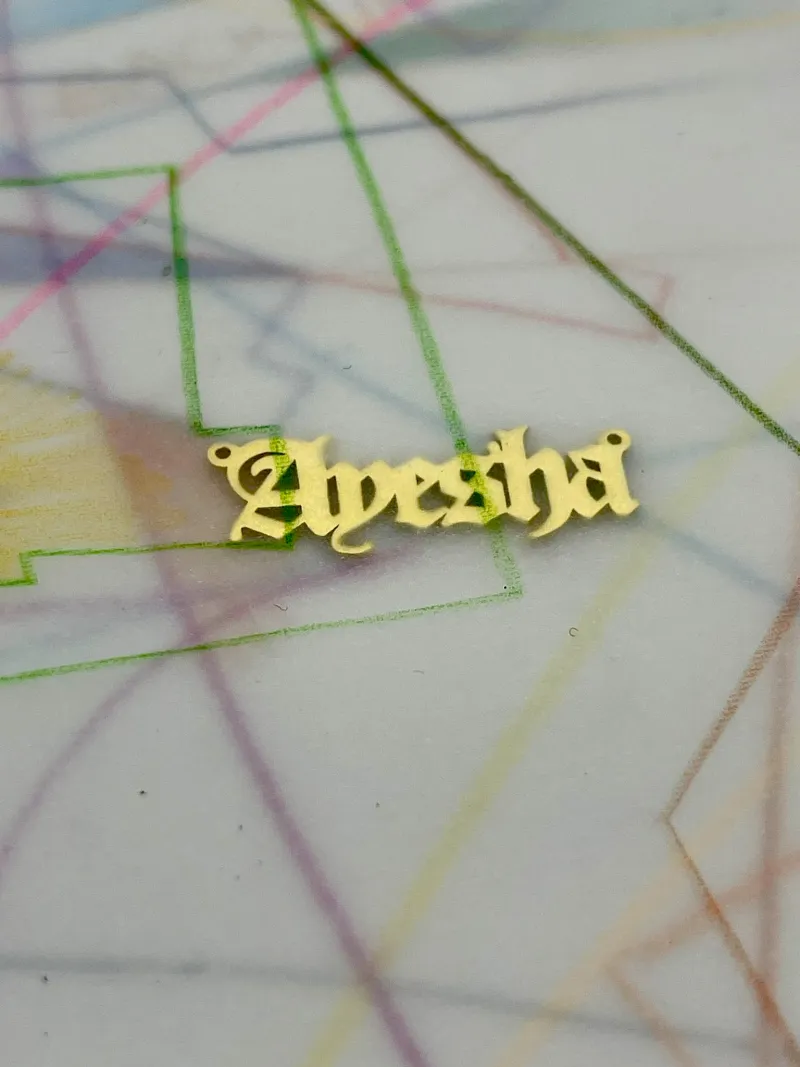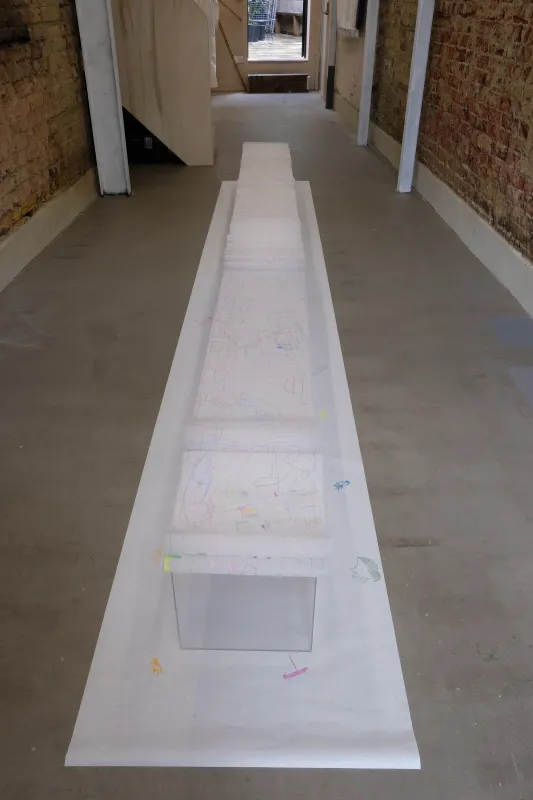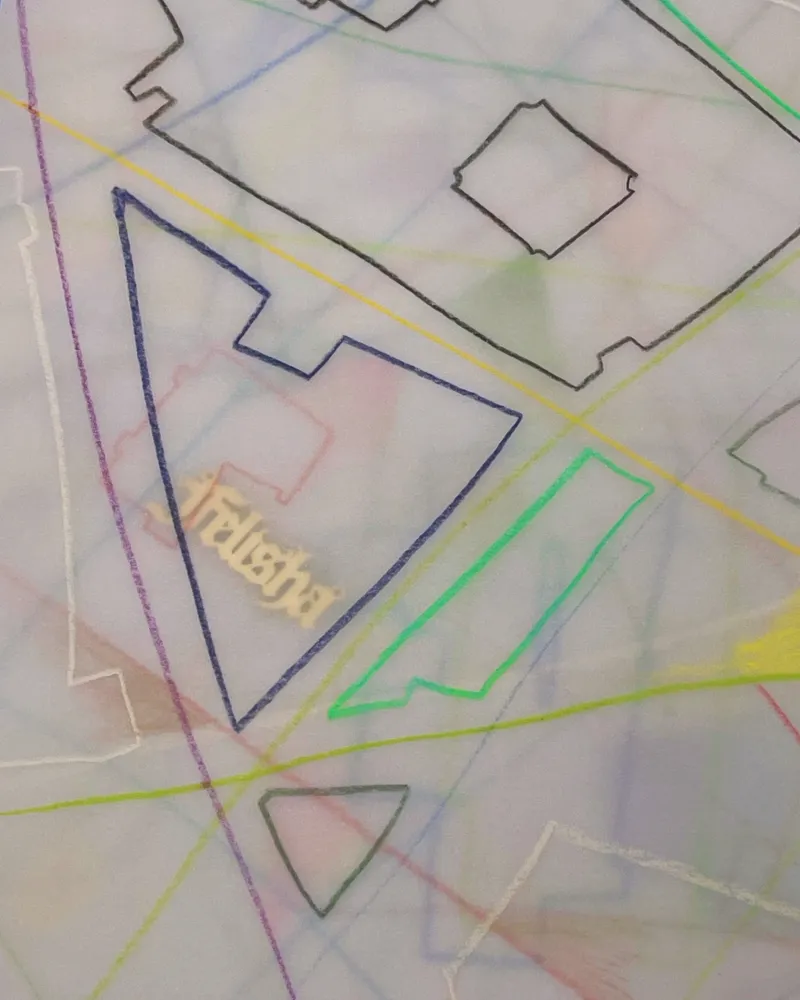Madwoman?!
What care is taken by people with agency, and what care must be taken for those without? What language do we use when our daily lives consist of unspeakable acts?
Madwoman?! investigates the intimate lives of unknowable women.
With reference to Agnes Richter’s jacket, Paris’ collages feminicides, white feminism and the inherited autonomy of nameplate necklaces, Madwoman?! addresses personal and intergenerational struggles with motherhood and sisterhood in France, Germany, the UK and Trinidad & Tobago.
Using the concept of a school uniform to explore clothing’s potential to regulate bodies, these textile and paper works play with the trust inherent to performance and spectatorship; the breaking of this trust underscores gendered violence in public and private space.
NB: In this work, woman is used as a term for feminised, subjugated persons.
Bad Mothers
Bad Mothers, 2024. 140cm x 210cm. Gold-plated silver, mother-of-pearl, bamboo, Wool, golden thread.
Bad Mothers is a family tree of nameplate necklaces hung upon inherited mother-of-pearl buttons that are sewn onto a hand-woven moroccan wool blanket. Impurities and defects in the materials address not only the contested nature of the vital memories of people living with difficult pasts, but the ways in which skewed ethics factor in the production and reproduction of such memories.
This and other artworks were concieved in conversation with Paula Reavey, who is with Steven Brown a co-author of Vital Memory and Affect, Living with a Difficult Past.
Ting to put in House
Ting to put in House, 2022-2024. 15cm x 2500 cm Gold-plated silver, Coloured pencil, highlighter pencil on architectural paper.
Ting to put in House is about work that is troubled by domesticity, forced intimacy, and the price of safety promised by upward mobility. A drawing-installation on architectural paper that layers hand-copied blueprints of institutional buildings (schools, hospitals, immigration offices) with repeated tracings of jumpsuit sewing patterns originally made for myself and my once collaborators, it is memory work piled up, tucked and folded. Scattered throughout this scroll are nameplate pendants which name some women who once helped me navigate these institutions, before those friendships collapsed under the weight of unspoken power dynamics and racialised dependence.
Like many of the Madwoman?! works, it rues the impermanence of care and feelings of belonging.
"And when the woman with the multiple degrees says, I didn’t know black women could get cancer, instinctively you take two steps back though all urgency leaves the possibility of any kind of relationship as you realize nowhere is where you will get from here."
- Claudia Rankine, Citizen: An American Lyric (Graywolf Press, 2014)
Marigolds
Marigolds, 2024 Gold-Flecked Wenzhou paper, gold embroidery thread, mother of pearl.
These orange glitter-flecked Wenzhou paper cutouts reference the Marigold brand washing-up gloves from an anecdote about Princess Diana of Wales. Lady Di is a loaded figure for many mums of elder millennials like myself. In terms of the post-colony, the consumption and propagation of Diana's mediatised narratives within Empire can be a validating tool in the necessary assertion and defense of one's own vulnerability, class mobility and emotional complexity.
Takeaways for visitors, the Marigolds could also be offered at a feminicide collage in the exhibition space’s garden.
"There is a glaring gap in respect for Black British women, and it is in this chasm that I find the wooden slat bridge connecting Diana to people who exist and move in spaces the Windsors couldn’t imagine."
-Alegria Adedeji, Harper's Bazaar, 2020
Collage Feminicide: The Soldier who
The Soldier who... appropriates a headline from the news outlet, LoopTT: “The soldier who was hit by a PTSC bus in San Fernando was wanted by police for stabbing a woman hours earlier.” Referencing the typographic format of the collages féminicides in France - A4 sheets used in feminist paste-ups - the work plays between public spectacle and gendered erasure. In much of Caribbean vernacular, “soldier” may signify not only formal authority but general masculine resilience, or a colloquial gesture toward de-escalation. The stabbed woman remains unnamed, unknowable.
San Fernando, where the incident occurred, is also my birthplace, proof of a dual or previous citizenship made conspicuous in my new european passport. As in other works from the Madwoman?! series, here I consider institutional language, media framing, and the politics of visibility surrounding feminised subjects in state and social systems.
"I knew they were following, I knew too that as long as I was in sight of Aunt Cora’s house they would do nothing but stroll along some distance after me. But I knew when they would draw close. It would be when I was going up the hill. There were walls and gardens on each side of the hill and no one would be there at this hour of the morning.
Half-way up they closed in on me and started talking. The girl said, ‘Look the crazy girl, you crazy like your mother. Your aunt frightened to have you in the house. She send you for the nuns to lock up. Your mother walk about with no shoes and stockings on her feet, she sans culottes. She try to kill her husband and she try to kill you too that day you go to see her. She have eyes like zombi and you have eyes like zombi too. Why you won’t look at me.’
The boy only said, ‘One day I catch you alone, you wait, one day I catch you alone!' When I got to the top of the hill they were jostling me, I could smell the girl’s hair."
- Jean Rhys, Wide Sargasso Sea, 1982
